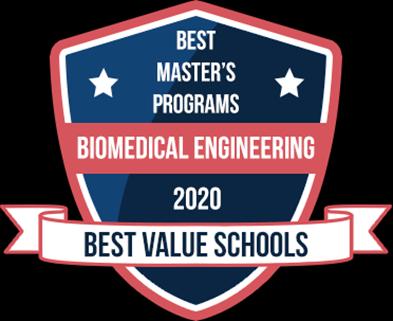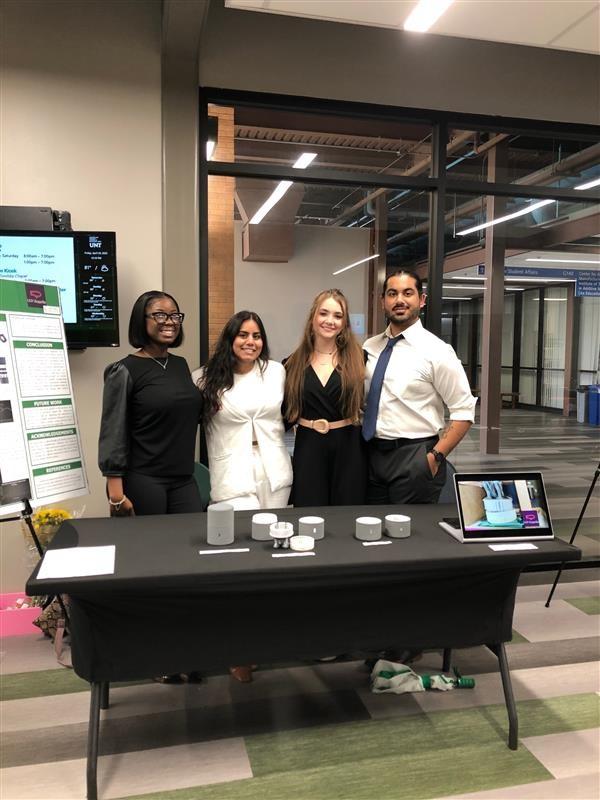Biomedical Engineering Annual Report







Another eventful year for UNT Biomedical Engineering! The Texas Higher Education Coordinating Board (THECB) approved our innovative Ph.D. program for Fall 2021. The Ph.D. program is the first of its kind in a public institution in Texas! We have exceeded expectations by enrolling 22 doctoral students in the program in one year. Our graduate program has more than doubled in the last 2 years. Our graduates continue to accept challenging jobs at the top biomedical companies in the nation. This year, we have crossed the 300 mark in total enrollment. We continue to shine with 50% women and 39% of underrepresented minority students in our overall student population . Our junior faculty are beginning to hit their straps as evidenced by the number of grants received in the last 2 months alone. Our research expenditures for 2021 22 crossed $1M.
Personally, the department is unrecognizable from the one I founded in 2014. This is a vibrant, dynamic department with 13 faculty, 3 staff members and more than 300 students. Our faculty research interests encompass the spectrum of biomedical engineering. The novel startup track in our Ph.D. has put us on the cusp of a dream to create innovative, healthcare startups in the department that serve as the engine of biomedical and biotech growth for Texas and the nation. We are entering a new period of growth and excellence. I look forward to being an eager participant as our amazing students and faculty scale new heights. Go Mean Green! Go BMEN!
Sincerely,
Vijay Vaidyanathan, Ph.D. Founding Chair, Department of Biomedical Engineering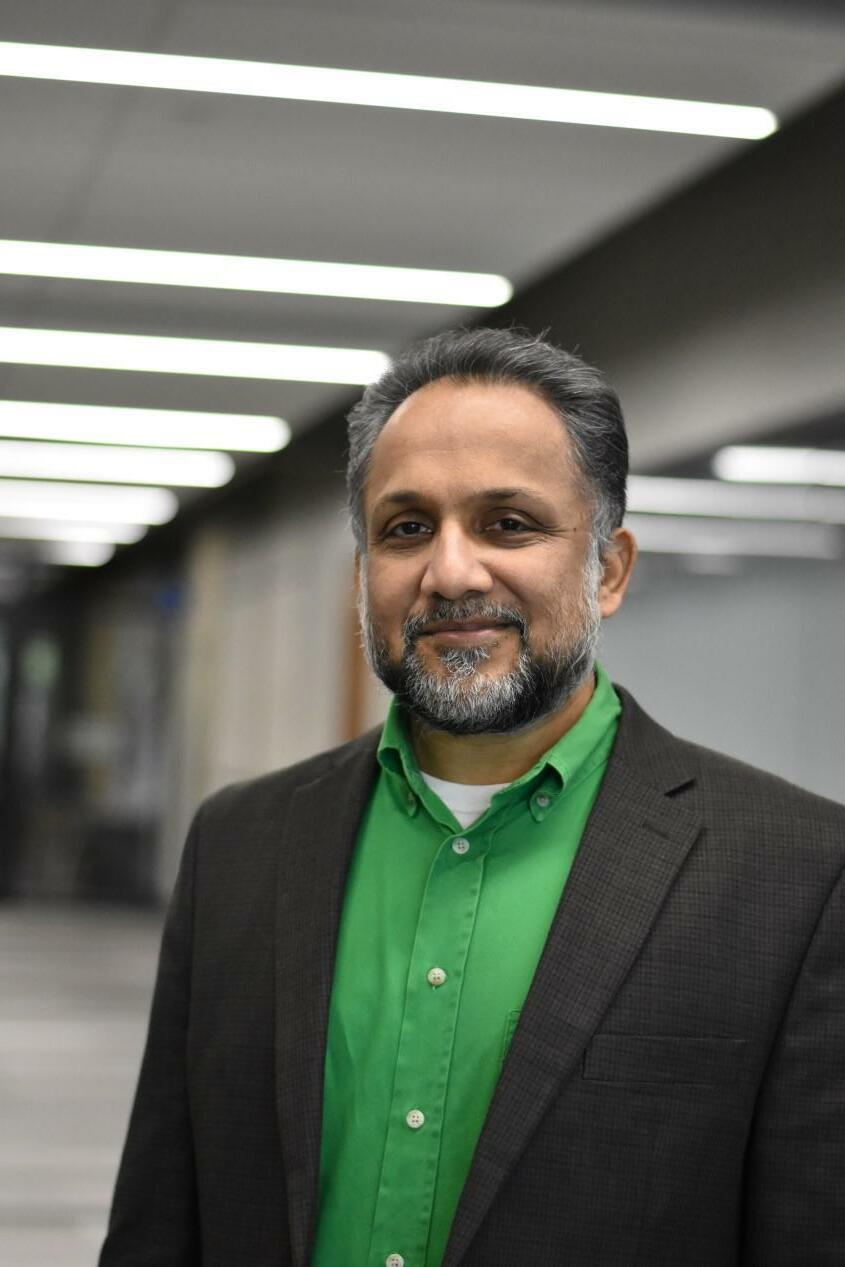



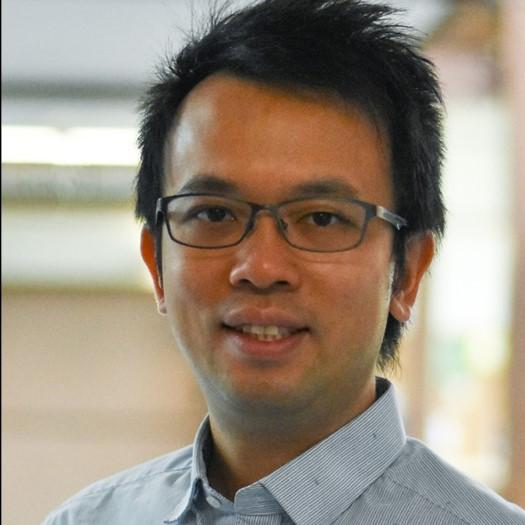
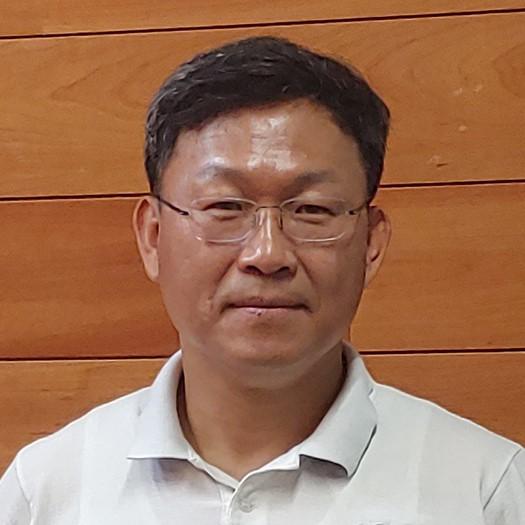

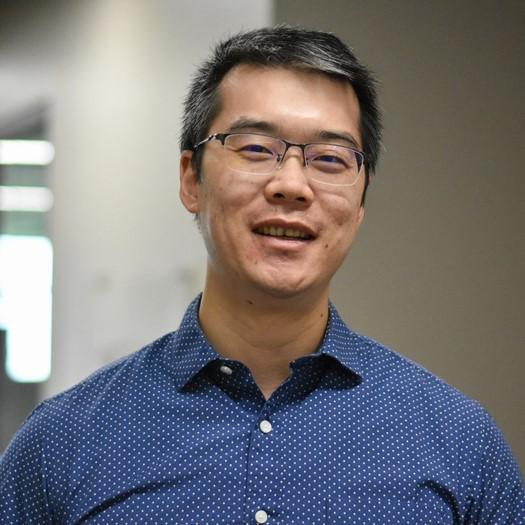

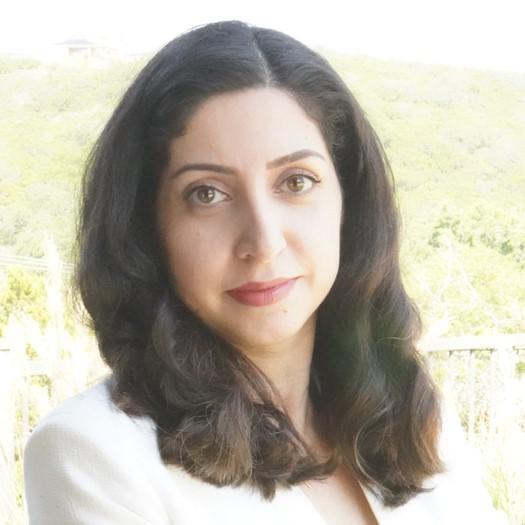
Dr. Yong Yang: Micro and nanotechnology innovations in medicine; tumor on chip, biomimetic environments.
Dr. Moo-Yeal Lee: 3D bioprinting of human tissues for disease modeling and predictive drug screening.
Dr. Amir Jafari: Soft robotics and artificial muscles, exoskeletons, rehabilitation robotics.
Dr. Clement Chan: Protein design and engineering for creating biosensors, genetic circuit approach to develop cellular devices for health.
Dr. Brian Meckes: Modulating stem cell differentiation for bone cartilage interface regeneration; nanoparticle delivery systems for improved delivery and decreased off-target effects.
Dr. Lin Li: Multi-modality approaches in biomarker study of post traumatic epilepsy, development of data driven approach for automatic pattern recognition in neurointensive care unit.
Dr. Huaxiao ‘Adam’ Yang: Stem cell bioengineering for cardiovascular disease modeling and regenerative medicine.
Dr. Neda Habibi: New drug delivery systems for cancer treatments using nanotechnology
Dr. Melanie Ecker: Polymers for biomedical applications, biomaterials, flexible bioelectronics and neural interfaces.
Dr. Vijay Vaidyanathan: Biomedical engineering for the elderly, vital sign monitoring.
Dr. Youngwook Won joined the Department of Biomedical Engineering in Fall 2022. Before joining UNT, he served at the University of Utah Health Science center as an assistant professor in the Department of Surgery and the University of Arizona as an associate professor in the Department of Surgery.

Dr. Won’s research interests are the development of immunotherapeutic materials to overcome current limitations in the immunotherapy field, leading to the improved therapeutic efficacy of immunotherapy in cancer patients. The research approaches of Dr. Won’s laboratory involve cellular engineering in immune cells using a recombinant protein and genetic modification. The laboratory is currently focusing on 1) the development of novel platforms allowing for instant/transient engineering of immune cells with chimeric antigen receptors (CAR) and 2) the discovery of therapeutic materials to restore the activity of exhausted immune cells. Immune cell-based therapies have shown promise to treat various cancers. CAR technology is the most popular technology in current immunotherapy. Current CAR technology is based on the viral gene transfer to generate CAR immune cells that specifically recognize a particular cancer type and has superior anti-cancer activity. Virus-mediated CAR expression is permanent and results in several safety related challenges as a consequence of uncontrolled expansion and activity of CAR-immune cells remain. To overcome the limitations, they have developed a recombinant protein-based platform to generate instant/transient CAR immune cells. This study is to harness CAR technology in immunotherapy without such limitations.
Immunotherapy including CAR technology can bring its best therapeutic efficacy when it works with healthy immune cells. However, immune cells become exhausted due to
various factors, and these exhausted immune cells are not as effective as healthy immune cells in the eradication of cancer cells. Various attempts have been tried to revive exhausted immune cells, but they only restore surveillance of immune cells in the short term and are not able to rejuvenate exhausted immune cells for long periods. Dr. Won’s lab focus on the development of rejuvenating materials that are capable of rejuvenating exhausted immune cells for long periods. Dr. Won’s lab is expected to continue biomedical research to develop a clinically translatable therapeutic platform.
Citations and further readings from recent research progress:
1. Han S, Jung M, Kim AS, Lee DY, Cha BH, Putnam CW, Lim KS, Bull DA, Won YW*. Peptide Adjuvant to Invigorate Cytolytic Activity of NK cells in an Obese Mouse Cancer Model, Pharmaceutics. (2021) 13(8), 1279
2. Lee DY, Kim KS, Valencia GM, Jung M, Bull DA, Won YW*. One step Method for Instant Generation of Advanced Allogeneic NK Cells. Advanced Sciences. (2018) 5(11), 1800447
As a postdoctoral fellow, Dr. Esmailie’s research has been focused on the prediction of the formation or presence of a blood clot (Thrombosis) in prosthetic aortic valves, as well as the prediction of aortic valve replacement outcomes using reduced order models, finite element analysis (FEA), and fluid-structure interaction (FSI) methods. She analyzed computed tomography (CT) images for more than 150 patients who have received transcatheter aortic valves and correlated the patient-specific hemodynamic and anatomic parameters to a threshold that indicates the possibility of blood clot formation on prosthetic heart valves [1, 2]. In addition, Dr. Esmailie applied classification machine learning (ML) algorithms to include anatomical features in the prediction method and improved of the accuracy of the blood clot prediction. As a Ph.D. candidate, her research was directed at thermal management methods to ensure the thermal safety of patients undergoing magnetic insertion of cochlear implants. Magnetic insertion of cochlear implants decreases the insertion force by 50% [3]. As such, it leads to a higher success rate and better outcomes in cochlear implant surgeries.

replacement, cochlear implant insertion, and atrial fibrillation ablation. TFAM lab is currently focusing on 1) exploring the non-invasive methods to prevent post transcatheter valve replacement thrombus formation, and 2) thermal management of wireless left ventricle Dr. Esmailie received her Ph.D. from the University of Utah. She worked at the Georgia Institute of Technology/ Emory School of Medicine as a postdoctoral fellow before joining the UNT Department of Biomedical Engineering.
F. Esmailie et al., JACC. 2021, 78 (19), B106 B107, doi: 10.1016/j.jacc.2021.09.1112
Dr. Xiaodan Shi is Biomedical Engineering’s primary full-time teaching faculty and has been with the department since 2019. Her background is in both Chemical Engineering and Biomedical Engineering. Dr. Shi completed her Ph.D. in Biomedical Engineering at Mississippi State University, and Post doctoral training at University of Texas at Arlington. Since joining the department, Dr. Shi has created and taught various levels of both undergraduate and graduate courses, ranging from the freshman introductory core course to the advanced graduate elective courses.
In addition to her teaching, Dr. Shi also has extensive research experience in heart tissue engineering and regeneration. Previous research on heart tissue mainly focused on the biomechanics of heart muscles, leaving behind an existing knowledge gap in understanding the contribution of elastin-rich outermost epicardial layer to the heart.

Dr. Shi’s research focuses on investigating and revealing the role of elastin rich epicardial ECM in mediating heart mechanical properties and functions. It was the first time to visualize the threedimensional ECM network and quantitively characterize the biomechanical contribution of the elastin-rich epicardial layer in ventricular relaxation and contraction via a combination of method including the state of the art confocal laser scanning, biomechanical testing, and computational simulation. The research concluded that the
epicardial layer, with its rich elastin content, acts like a prestrained ‘balloon’ wrapping around the heart by (1) providing an additional resistance mechanism during cardiac cycle and (2) reducing heart muscle stress to further assist with the heart contraction due to elastic recoiling.
The future studies focus on the understanding of how the epicardial prestraining facilitates heart tissue biomechanics and how heart diseases, i.e. myocardial infarction, could possibly alter the prestrained confinement (residual stress) of the epicardial layer and hence weaken the protections in ventricular expansion and efficiency of ventricular contraction.
References:
Shi, X., Liu, Y., Copeland, K. M., McMahan, S. R., Zhang, S., Butler, J. R., ... & Liao, J. (2019). Epicardial prestrained confinement and residual stresses: a newly observed heart ventricle confinement interface. Journal of the Royal Society Interface, 16(152), 20190028.
Shi, X., Zhang, S., Liu, Y., Brazile, B., Cooley, J., Butler, J. R., ... & Liao, J. (2023). Spatial distribution and network morphology of epicardial, endocardial, interstitial, and Purkinje cell associated elastin fibers in porcine left ventricle. Bioactive Materials, 19, 348 359
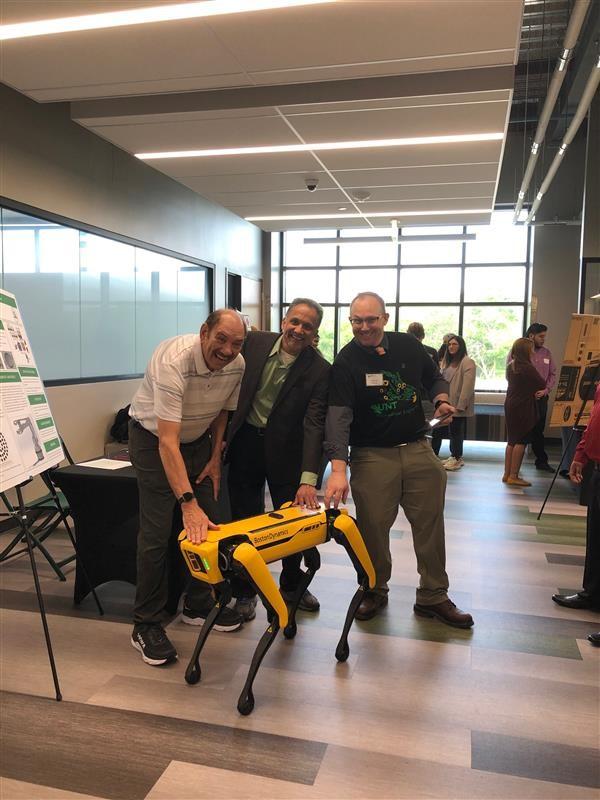
Lanre is a Biomedical Engineering senior with a concentration in biomaterials and management. He is a member of Dr. Melanie Ecker’s
Smart Polymers for Biomedical Applications Laboratory where he conducts cytotoxic and antimicrobial testing on bioactive glasses against mouse fibroblasts and E.coli and S.aureus, respectively. Lanre has co authored a chapter of Current Concepts in Dental Implantology edited by Dragana Gabric and Marko Vuletic, detailing the applications of bioactive glasses in the dental industry
Lanre is currently serving as the president of UNT’s chapter of the National Society of Black Engineer (NSBE), and has received commendations for his academic performances, such as being recognized as the “Outstanding Junior” by the BMEN department. After graduating with his B.S. in Spring 2023, Lanre plans to pursue a Ph.D. in a related field to become a laboratory researcher at a national laboratory.

Sarah is a Biomedical Engineering senior with a concentration in bioinstrumentation. She currently serves as President of the Biomedical Engineering Society (BMES), and Vice President of the Alpha Eta Mu Beta (AEMB) Biomedical Engineering Honor Society at UNT. Sarah also currently works at Safran Electrical and Power as an Equipment Engineering Intern.
Sarah has previously worked in Dr. Yong Yang's Micro and Nanoengineering in Medicine Laboratory, assisting with the research and design of mechanical stretching devices using electromagnets. Prior to this, she served as a Program Manager for HAKing Innovation -- a nonprofit dedicated to teaching STEM to children all across North Texas.

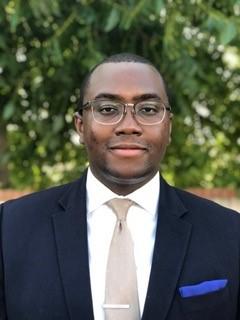
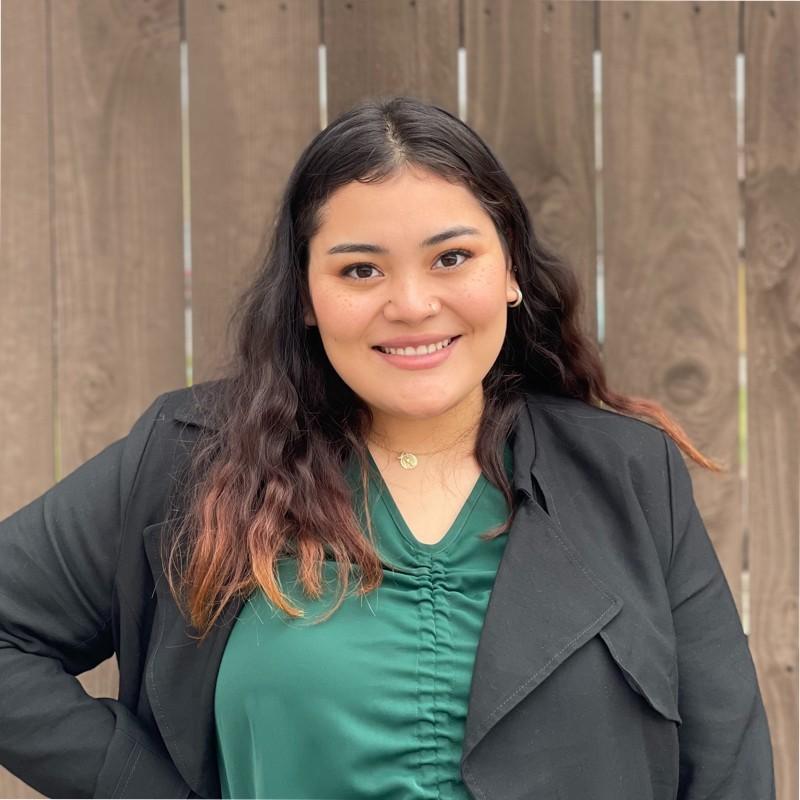
Jazmine graduated in Spring 2022 with her Bachelor of Science from the Biomedical Engineering program with minors in Electrical Engineering, Spanish, and Mathematics. She is now a graduate student completing the M.S. M.B.A. program and is working towards obtaining an M.S. in Biomedical Engineering and M.B.A. in Business
Jazmine is a teaching assistant for Biomedical Engineering, charged with instructing the junior level laboratories. Throughout her undergraduate career, Jazmine was involved in organizations like Kappa Delta Chi and the Biomedical Engineering Society (BMES), the latter of which she held the position of Vice President. Due to her extensive passion for being involved in her community, Jazmine was awarded the Leonor Garcia Scholarship, a scholarship that is given to students who demonstrate leadership skills and community service activities within their community.
Percy is a teaching assistant and second year graduate student in Biomedical Engineering. After experiencing burnout in his undergraduate studies, Percy discovered Biomedical Engineering and felt like all the puzzle pieces had fallen together. He had never imagined attending graduate school, but after such as positive experience studying biomedical engineering in his undergrad, it then became the obvious choice for him. His favorite thing about conducting research is the creativity that is stimulated within the solitude.
Percy’s major professor is Dr. Huaxiao Yang, and conducts research out of Dr. Yang’s lab. His research area is cardiovascular tissue engineering, with a focus on creating microscopic representations of the heart to model diseases, aging, etc. For his graduate research, Percy works on recreating the physiology of the human heart. Outside of cardiovascular research, he has a keen interest in neurological pathology, fetal brain malformations, and their potential cures.
Angello is a Ph.D. student in Biomedical Engineering and is pursuing his doctorate with the aid of the G RISE program (T32) at UNT. He received his Bachelor’s degree in Biomedical Engineering from UNT in 2020, and continued his academic career at UNT by enrolling in our BMEN graduate program, successfully defending his thesis is 2021.
Angello is a member of Dr. Huaxiao Yang’s Cardiovascular Tissue Engineering Lab, and his are of research is vascularizing cardiac organoids using hPSCs via a custom bio micro electro mechanical system (BioMEMS) device for cardiovascular development, disease modeling, regeneration, and drug screening applications.
Additionally, Angello is collaborating with Dr. Moo-Yeal Lee’s 3D Bioprinting lab to use their platform for cardiovascular development research. After graduating with his doctorate, Angello plans on becoming a professor and establishing his own lab at a university.
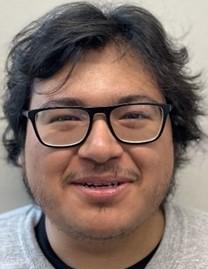 Kun Man Ph.D. in Biomedical
Kun Man Ph.D. in Biomedical
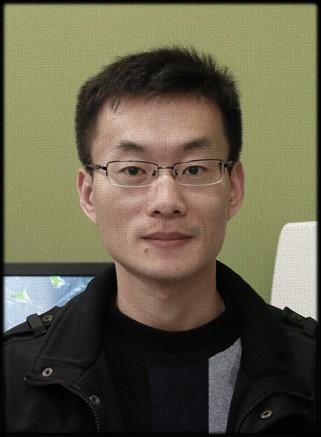
Kun is a Biomedical Engineering Ph.D. candidate whose research focuses on delineating the effects of nanostructures and mechanical stretches on the behavior of human cells including human mesenchymal stem cells (hMSCs), fibroblasts, epithelial cells among many others. Kun has applied his understanding of cell microenvironment interactions in multiple projects, for example, developing human alveolar interstitial on a chip systems for nanotoxicity study and screening nanoparticles to deliver drug for lung cancer treatment, integrating mechanical stretch and substate topography and stiffness into a cell culture platform to expand hMSCs for stem cell therapy, assessing surface modified alloys for bone regeneration.
Kun has delivered seven presentations (oral and poster) at the annual meeting of Biomedical Engineering Society and published six peer reviewed articles. He is currently wrapping up his research and preparing nine research articles for publication (two under review and two to be submitted in this November), with him being the first author listed in six of these articles.


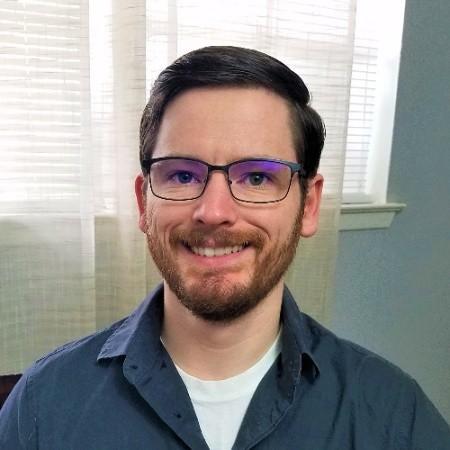

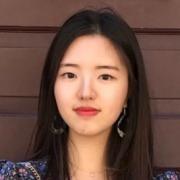

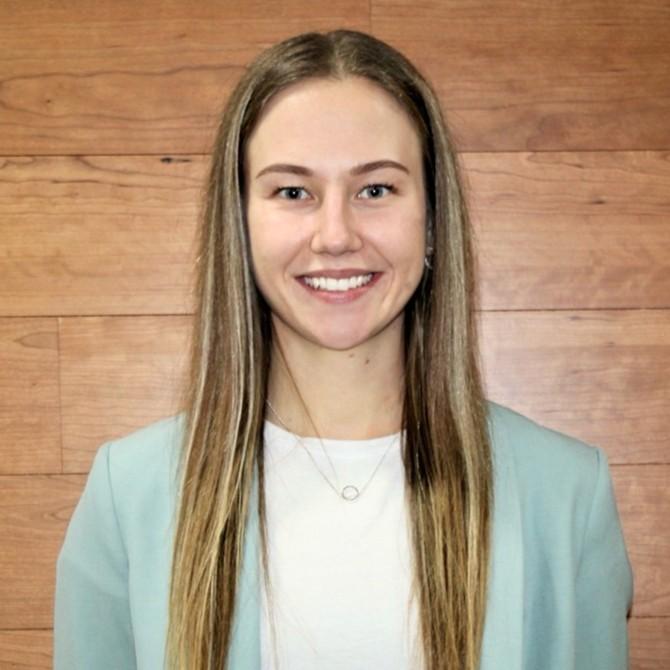
M.S. (May 2022) Research Associate Orna Therapeutics
Sophie Zoch
B.S. (May 2022)
Ph.D. student in Biomedical Engineering Wake Forest University


Caleb Bouchard
B.S. (May 2022)
Medical Student
University of Texas Health Science Center at San Antonio
